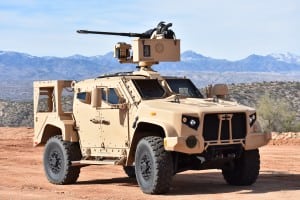
Army Under Secretary Ryan McCarthy on Thursday confirmed the service will buy 1,900 fewer Joint Light Tactical Vehicles (JLTV) than originally planned after including the program among a slew of cuts in its fiscal year 2020 budget request intended to shift funds towards development of future weapon systems. McCarthy told attendees at a Brookings Institution event the Army will reduce the program by $800 million with plans to finalize its JLTV fleet at 49,000 vehicles. “There’s no doubt the Army…

 By
By 











